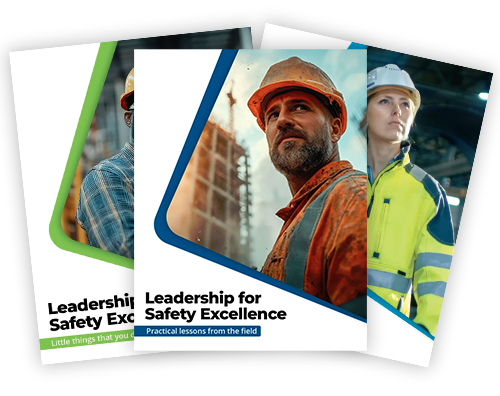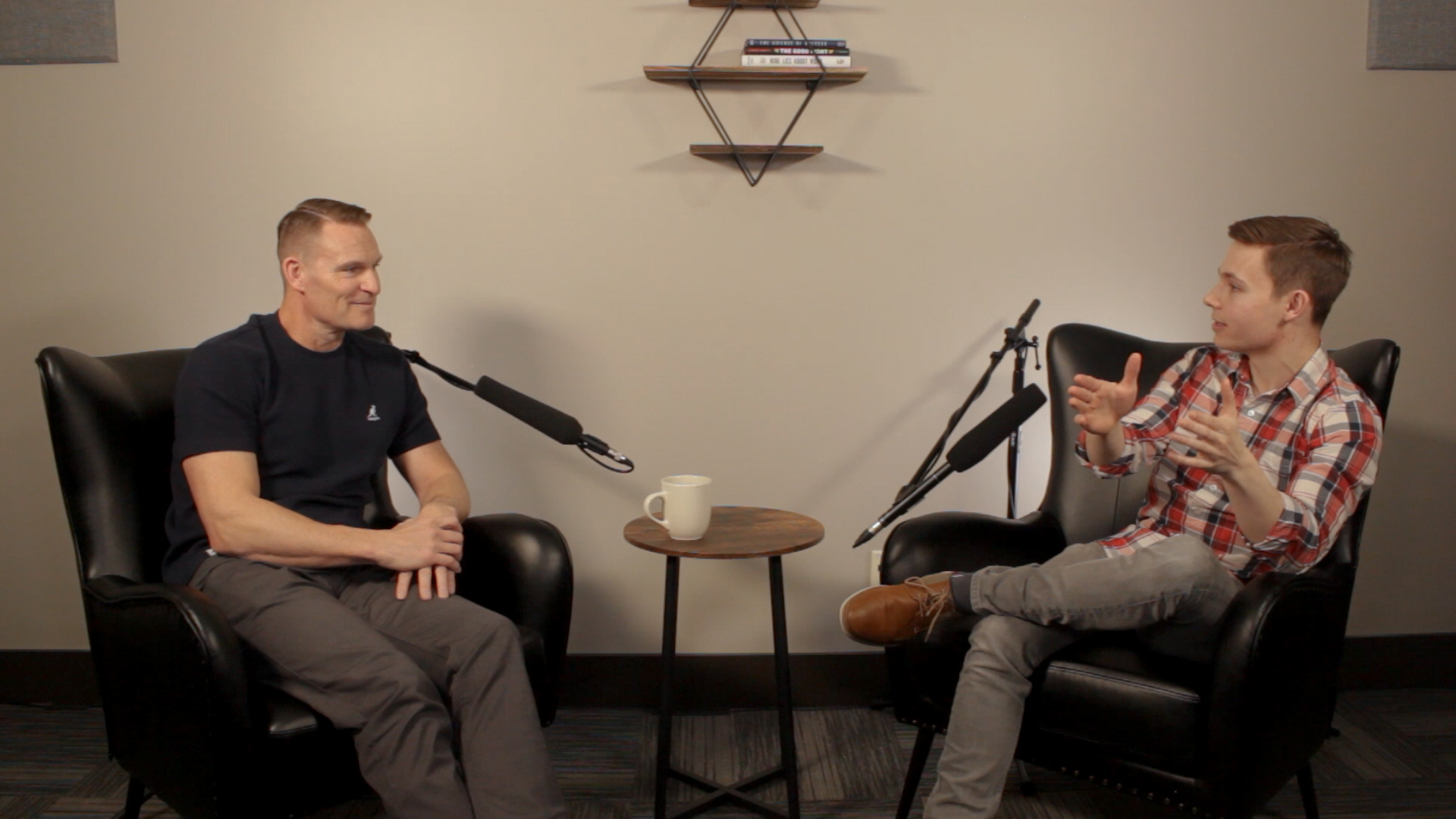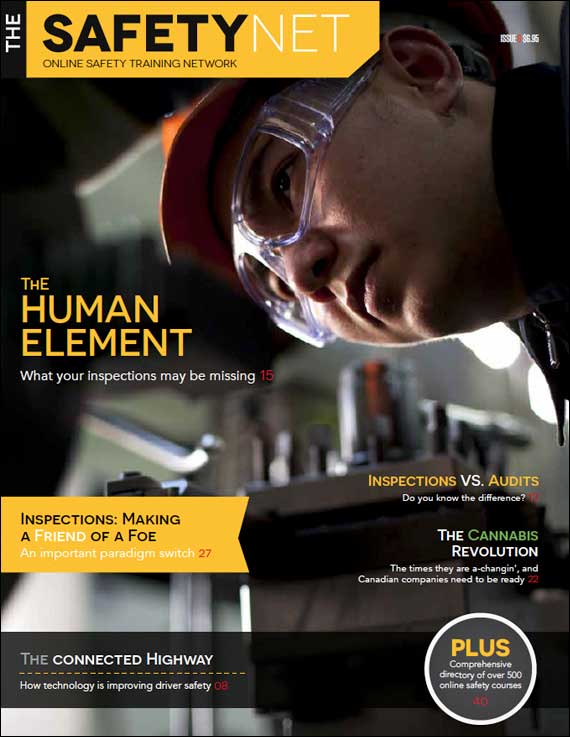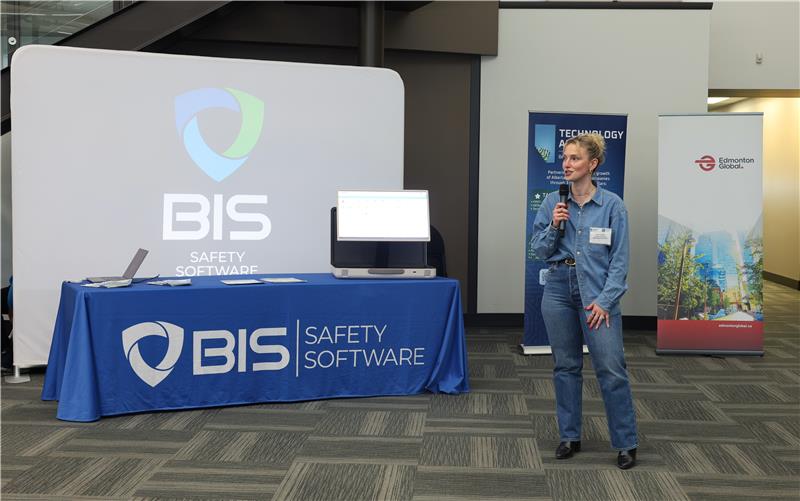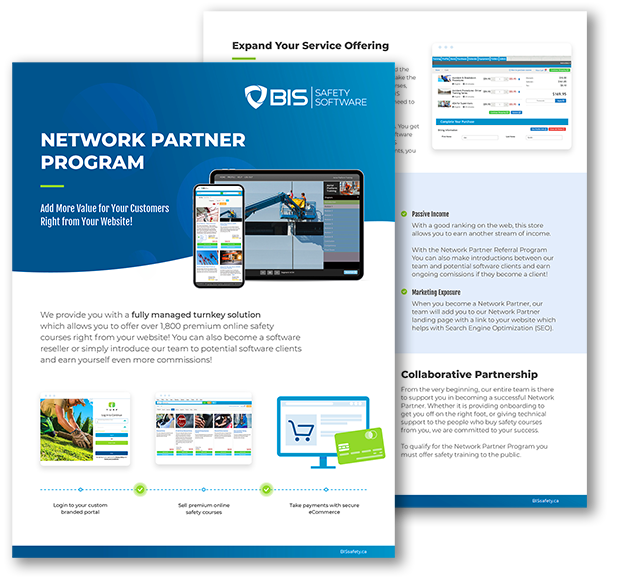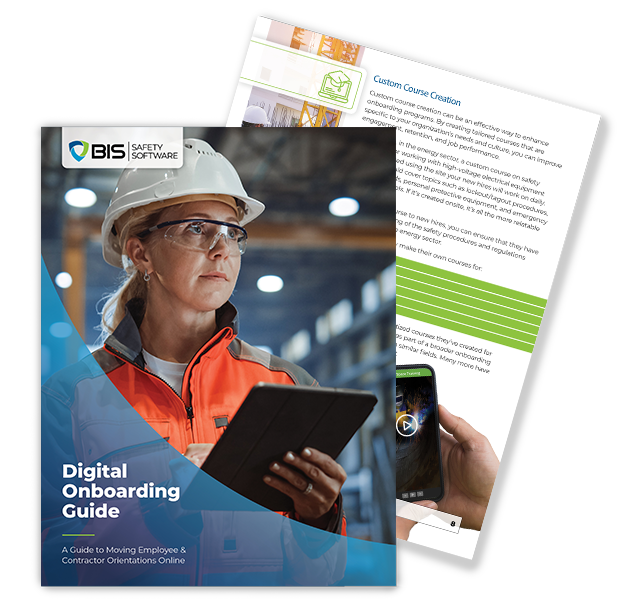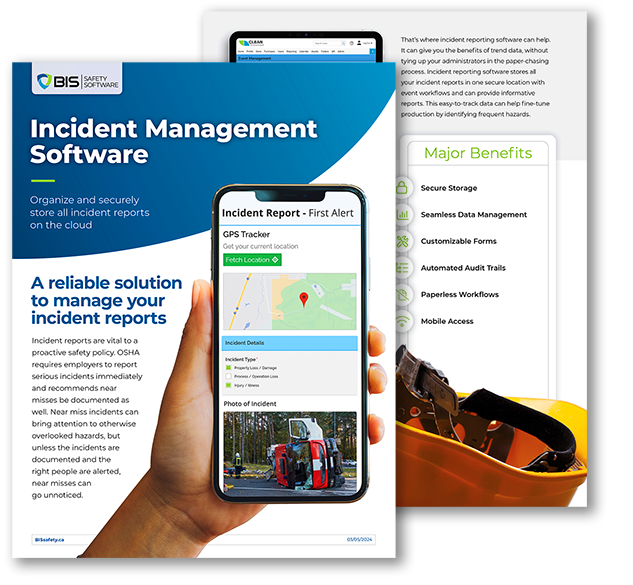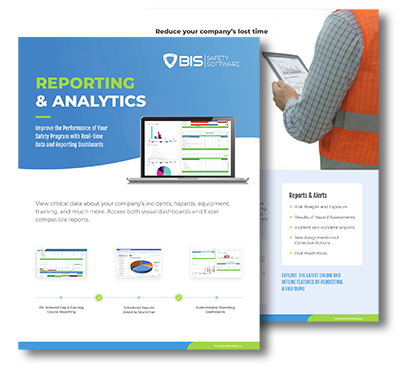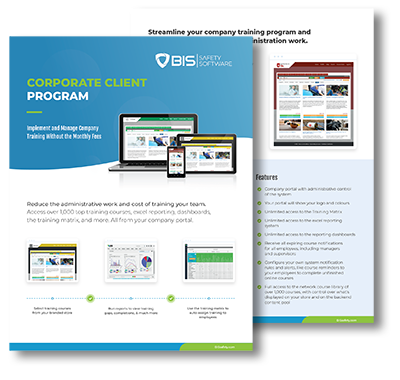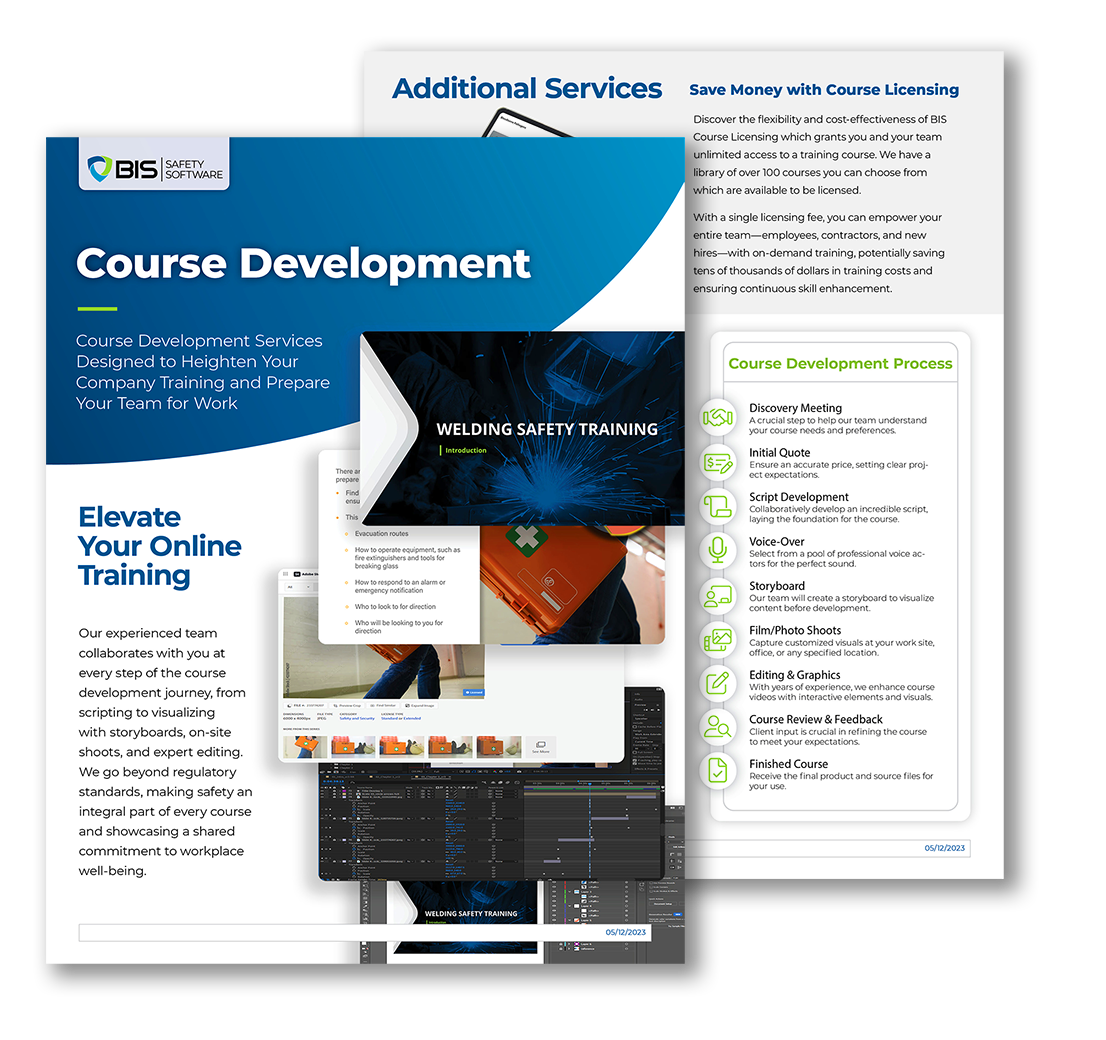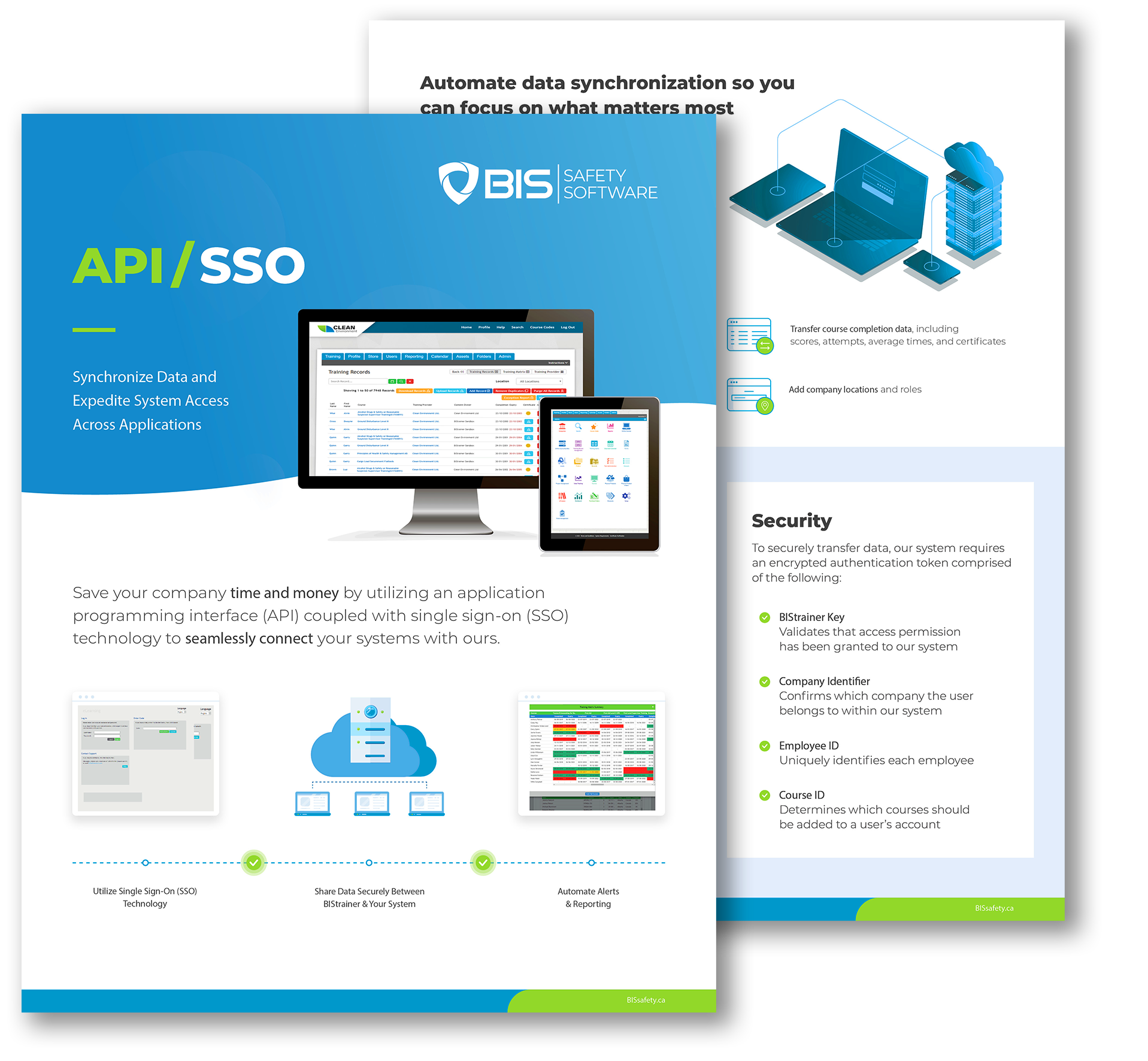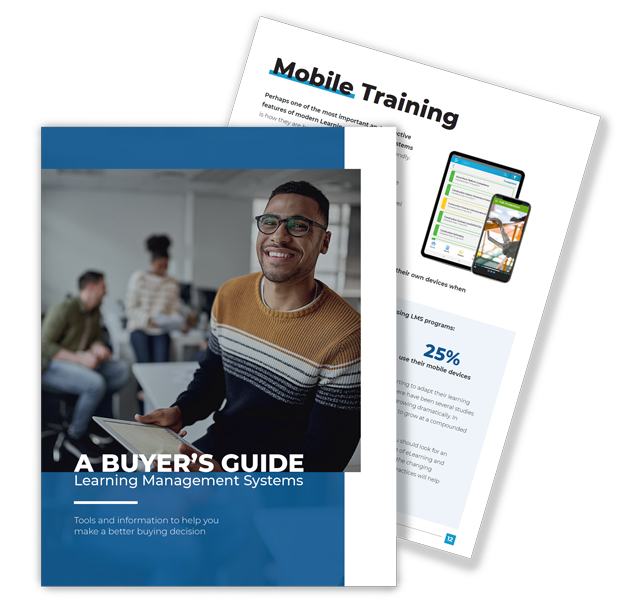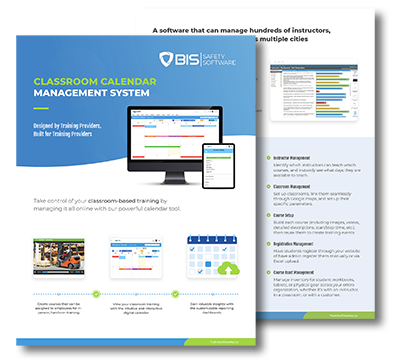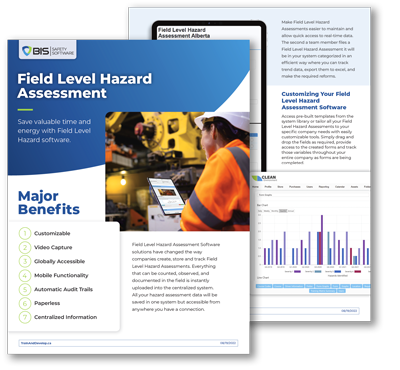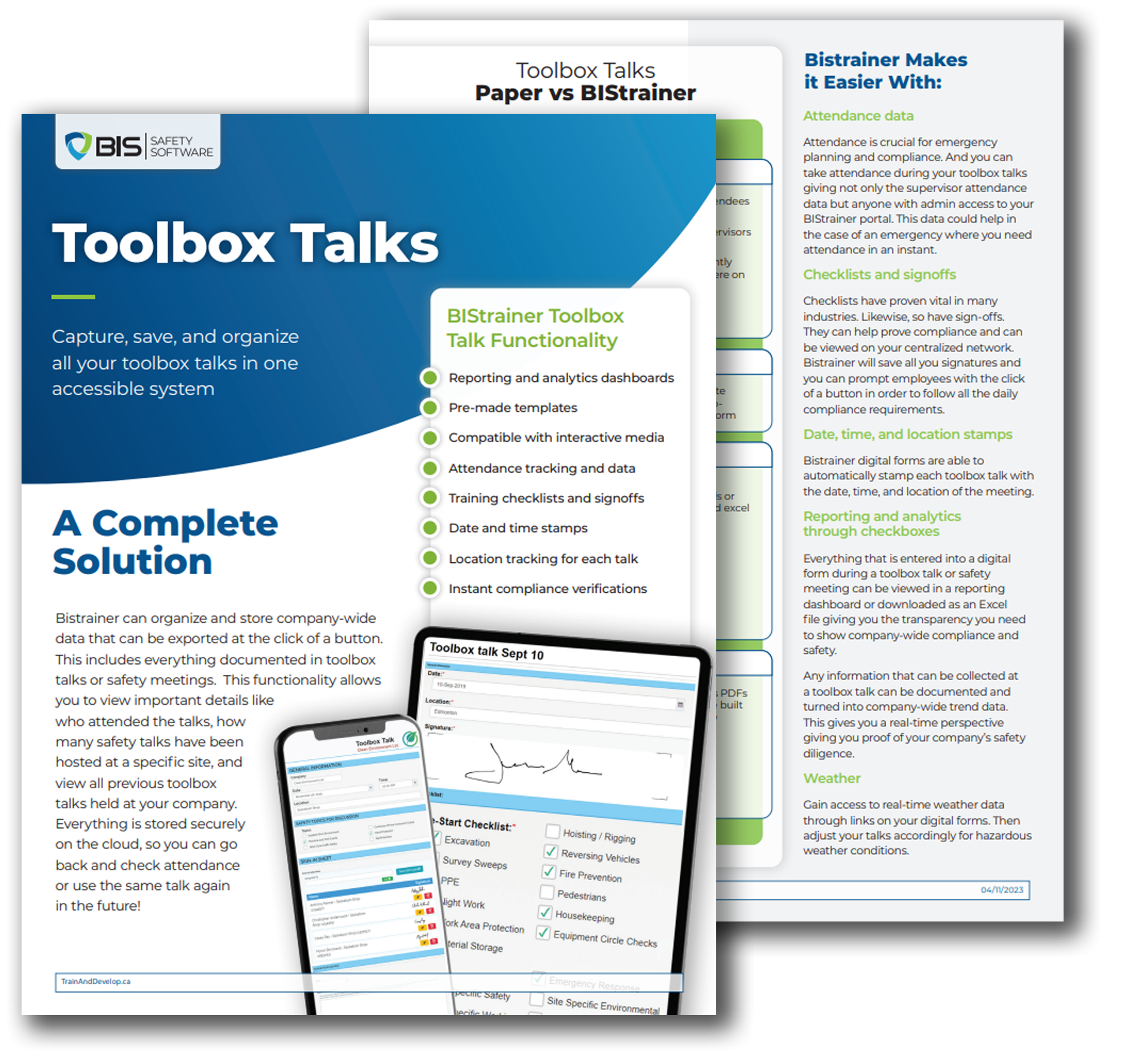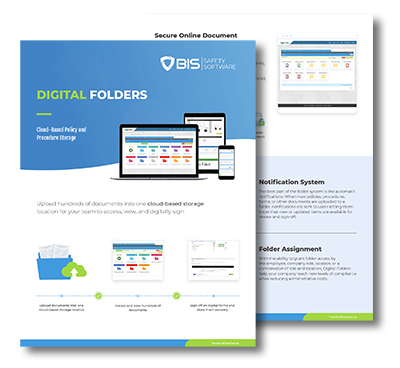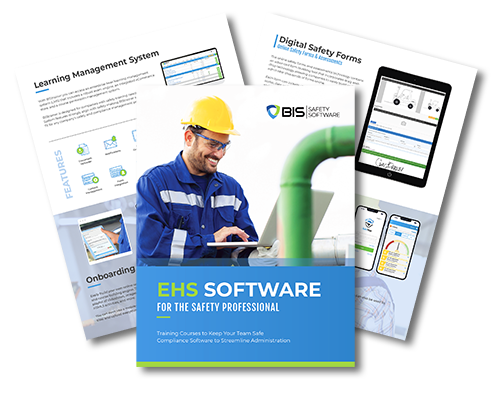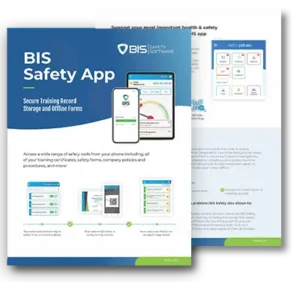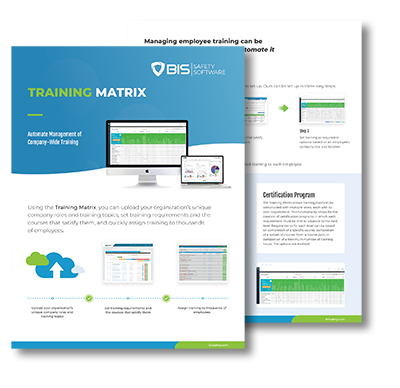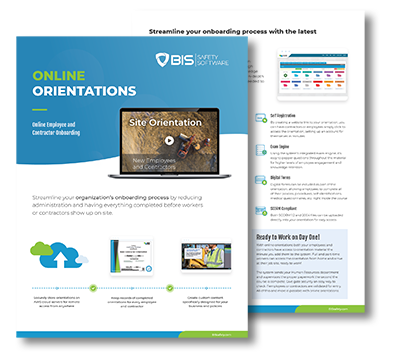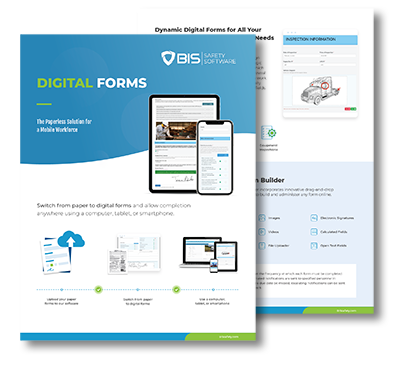What Your First Workplace Injury Teaches You (The Hard Way)

Home Blog What Your First Workplace Injury Teaches You (The Hard Way) Learning moments from the field. By DanAdminCAD Facebook LinkedIn Every worker remembers their first workplace injury. Not because they want to, but because it changes the way they see safety forever. Maybe it was a bruised finger, a back injury from bad lifting, or a slip that sent you home for the day. Whatever it was, it taught you a lesson you’ll never forget. One that, in hindsight, was probably preventable. The Moment It Clicks Before an injury, it’s easy to assume accidents happen to other people. You might hear safety talks and think, “Yeah, yeah, I know.” Then one day, you don’t double-check a machine lockout. You skip the gloves. You take that shortcut. And suddenly, safety isn’t just a workplace rule, it’s personal. For many workers, that’s when it clicks: Safety rules aren’t about inconvenience. They’re there to help you! Common First Injuries (And What They Teach You) The “I Just Need to Grab This” Hand Injury Lesson learned: Gloves exist for a reason. Even a quick adjustment can put you at risk. A nick this time could mean stitches later. Don’t risk it! The “I Thought It Was Stable” Ladder Fall Lesson learned: Always check your footing. One moment of overconfidence can cost you. The “It Wasn’t That Heavy” Back Strain Lesson learned: Proper lifting techniques matter. Your spine doesn’t get a redo. You only have one spine, so play it smart! The “I’ll Be Quick” Electrical Shock Lesson learned: Lockout/tagout isn’t optional, full stop. The Cost Even small injuries have big consequences. A sprained wrist can mean lost wages. A bad cut can sideline you for weeks. A moment of carelessness is never worth it. And here’s the kicker, most first injuries don’t happen in high-risk situations. They happen in routine moments, when workers think they’re safe. How to Learn the Lesson Without the Pain Some people need to get hurt to take safety seriously, but in a perfect world, it shouldn’t come to that. There’s no better safety teacher than earnestly listening, and then applying lessons learned. Listen to veterans. If experienced workers say, “Don’t do that,” believe them. They’ve seen what happens. Follow the rules, even when no one’s watching. The shortcut that worked today could fail tomorrow. Think about life outside of work. Your job is important, but so is being able to pick up your kids, play sports, or even just move without pain. The Best Injury Is the One That Never Happens Ask any seasoned worker, and they’ll tell you: If they could go back, they’d do things differently. The best way to learn from your first workplace injury? Don’t have one. Stay sharp. Stay safe. Because no lesson is worth learning the hard way. Follow us! Stay up-to-date with the latest spotlight articles, podcasts, the SafetyNET Magazine, or our book on Leadership for Safety Excellence. All updates will be shared on our social channels, click below to follow us. Facebook Linkedin Related Articles All Posts #EmergencyPreparedness 2025 safety trends 360 Immersive 360immersive 6S Safety accident prevention accidental careers adjustable workstations adult education AI automation AI implementation AI in business AI in operations AI in Safety AI podcast AI strategy AI transformation Alberta safety courses Allan James Moore artificial intelligence asking for help audit findings audit readiness Audit Reporting automation in safety automation strategy avoidable injuries awareness Aztec Safety back strain BambooHR integration behavior-based safety Behavioral Safety behavioural safety biometric sensors BIS Podcast BIS Safety Podcasts BIS Safety Software BIS Safety Spotlight black holes Blame Culture BP Texas City Explosion Brave Leadership Brett Burkard burnout business automation Canadian OHS Canadian safety Canadian safety history Canadian safety standards carbon monoxide Carolynne Heron CCOHS chemical chemical vapors chronic injuries chronic pain cloud-based safety tools Coming Soon community safety programs Competency in Safety complacency in safety Compliance compliance courses Compliance In Canada compliance issues Compliance management Compliance Reporting compliance tools compliance tracking compliance training compliance vs protection Construction advocacy Construction education Construction industry construction safety construction safety training continuous improvement continuous safety improvement corporate culture corporate training corrective actions crane CSA standards Customer Spotlight Customer Spotlight Kevin Swinden Global Hazmat Safety Culture Hazmat Management Dangerous Goods Competency in Safety Workplace Risk Mitigation BIS Training Clients Canadian EHS customized training daily trip inspection Damage Prevention Dangerous Goods dangerous goods classification Danny Sellers data-driven safety Decision Analysis defect management defect tracking defensive driving DEI in onboarding digital compliance digital forms Digital Hazard Reporting Digital Onboarding digital safety Digital Safety Audits Digital safety systems digital safety tools digital safety transformation Digital Training Tools digital transformation DMS features document control document management system Dr. Joanna Pagonis Dr. Tom Krause driver file management driver training driving instructor program DTRMS e-learning e-learning tools eadership in safety early intervention education technology EHS EHS Adoption EHS Compliance EHS digital solutions EHS Inspections EHS Onboarding EHS software EHS tools Einstein electrical safety Emergency Action Plan emergency preparedness emergency response emergency supplies emotional training employee behavior employee engagement employee health Employee onboarding Employee Readiness employee safety employee training Energy Isolation ergonomic consulting ergonomic design ergonomic risks ergonomics Evacuation Procedures evidence collection EWI Works exoskeleton exoskeletons failure analysis fall protection fast onboarding field experience field level hazard assessments field safety field safety services Field Safety Technology Field-Friendly Software Fire Drills fire prevention Fire Safety Training first aid kit first week on the job first workplace injury fleet management fleet safety FLHA engagement FLHA Integration FMEA freight Frontline Engagement frontline safety future of work Global Hazmat gravitational waves hand injuries handling hazardous materials hands-on training hazard analysis hazard assessment compliance Hazard Awareness hazard communication Hazard Identification hazard prevention hazard recognition Hazardous Energy Control Hazmat Management Health & Safety Podcast health and safety hearing loss prevention hearing protection heavy equipment safety hidden workplace hazards high voltage systems HR automation HR software human factors human in the loop Human Performance human vs machine human-centered design human-centered safety humor in safety ICBC certification immersive learning Imposter
The Dangers You Can’t See

Home Blog The Dangers You Can’t See The hidden workplace hazards you need to know about. By DanAdminCAD Facebook LinkedIn Some workplace dangers are obvious. Heavy machinery, heights, electrical wires, everyone knows to be cautious around them. But the hazards you don’t see? Those can be just as deadly. Invisible risks lurk in every job site, creeping up unnoticed until it’s too late. If you’re not paying attention, they can take you down before you even realize they’re there. The Hidden Threats You Need to Know Toxic Air – Dust, fumes, and invisible gases don’t just make breathing harder, they can silently destroy your lungs. Carbon monoxide, silica dust, and chemical vapors can be odorless and lethal. If ventilation isn’t enough, wear a respirator. Your lungs don’t get a second chance. Hearing Loss – You won’t notice it at first. A little ringing after a shift, some muffled sounds. But long-term exposure to loud environments can cause irreversible hearing damage. The worst part? You won’t even realize it’s happening until you’re struggling to hear conversations. Protect your ears before the damage is done. Fatigue – Lack of sleep is just as dangerous as working drunk. Slower reflexes, poor decision-making, and zoning out on the job can turn an ordinary task into a deadly mistake. If you’re exhausted, you’re a hazard, to yourself and everyone around you. Repetitive Motion Injuries – Small, repeated movements might not seem dangerous, but over time, they wear your body down. Poor lifting techniques, bad posture, and repetitive strain add up to chronic pain, lost workdays, and surgeries. Adjust your workspace. Take breaks. Don’t ignore the aches. Psychological Hazards – Stress, anxiety, and burnout don’t just affect your mood, they impact your ability to work safely. Distracted, overwhelmed workers are more likely to make dangerous mistakes. Mental health matters just as much as physical safety. Why These Dangers Are So Easy to Ignore Unlike a fall or a fire, these hazards don’t create instant chaos. They creep in quietly. They don’t feel urgent, until the damage is done. That’s what makes them so dangerous. No one feels their lungs getting weaker until years of exposure catch up. No one notices their hearing going until the damage is irreversible. No one thinks they’re too tired to work safely, until they make a deadly mistake. How to Protect Yourself from What You Can’t See Recognize the Risk – Just because you can’t see it doesn’t mean it’s not there. Stay aware of hidden dangers. Use the Right Gear – PPE isn’t just for obvious risks. Respirators, hearing protection, and ergonomic supports make all the difference. Take Breaks – Fatigue and repetitive strain don’t announce themselves. Pay attention to your body before it forces you to stop. Report Issues – Poor air quality, excessive noise, unrealistic workloads, if something feels wrong, speak up. Waiting could cost you your health. Make Safety a Habit – Don’t wait for symptoms. Preventative action is the only way to avoid slow-building hazards. Out of Sight, But Not Out of Mind The most dangerous threats are the ones you ignore. Just because you can’t see them doesn’t mean they aren’t hurting you. Protect yourself before the damage is done. Stay sharp. Stay safe. Sure, the biggest hazards can often sneak up on you, but a vigilant worker is a safe worker. Follow us! Stay up-to-date with the latest spotlight articles, podcasts, the SafetyNET Magazine, or our book on Leadership for Safety Excellence. All updates will be shared on our social channels, click below to follow us. Facebook Linkedin Related Articles All Posts #EmergencyPreparedness 2025 safety trends 360 Immersive 360immersive 6S Safety accident prevention accidental careers adjustable workstations adult education AI automation AI implementation AI in business AI in operations AI in Safety AI podcast AI strategy AI transformation Alberta safety courses Allan James Moore artificial intelligence asking for help audit findings audit readiness Audit Reporting automation in safety automation strategy avoidable injuries awareness Aztec Safety back strain BambooHR integration behavior-based safety Behavioral Safety behavioural safety biometric sensors BIS Podcast BIS Safety Podcasts BIS Safety Software BIS Safety Spotlight black holes Blame Culture BP Texas City Explosion Brave Leadership Brett Burkard burnout business automation Canadian OHS Canadian safety Canadian safety history Canadian safety standards carbon monoxide Carolynne Heron CCOHS chemical chemical vapors chronic injuries chronic pain cloud-based safety tools Coming Soon community safety programs Competency in Safety complacency in safety Compliance compliance courses Compliance In Canada compliance issues Compliance management Compliance Reporting compliance tools compliance tracking compliance training compliance vs protection Construction advocacy Construction education Construction industry construction safety construction safety training continuous improvement continuous safety improvement corporate culture corporate training corrective actions crane CSA standards Customer Spotlight Customer Spotlight Kevin Swinden Global Hazmat Safety Culture Hazmat Management Dangerous Goods Competency in Safety Workplace Risk Mitigation BIS Training Clients Canadian EHS customized training daily trip inspection Damage Prevention Dangerous Goods dangerous goods classification Danny Sellers data-driven safety Decision Analysis defect management defect tracking defensive driving DEI in onboarding digital compliance digital forms Digital Hazard Reporting Digital Onboarding digital safety Digital Safety Audits Digital safety systems digital safety tools digital safety transformation Digital Training Tools digital transformation DMS features document control document management system Dr. Joanna Pagonis Dr. Tom Krause driver file management driver training driving instructor program DTRMS e-learning e-learning tools eadership in safety early intervention education technology EHS EHS Adoption EHS Compliance EHS digital solutions EHS Inspections EHS Onboarding EHS software EHS tools Einstein electrical safety Emergency Action Plan emergency preparedness emergency response emergency supplies emotional training employee behavior employee engagement employee health Employee onboarding Employee Readiness employee safety employee training Energy Isolation ergonomic consulting ergonomic design ergonomic risks ergonomics Evacuation Procedures evidence collection EWI Works exoskeleton exoskeletons failure analysis fall protection fast onboarding field experience field level hazard assessments field safety field safety services Field Safety Technology Field-Friendly Software Fire Drills fire prevention Fire Safety Training first aid kit first week on the job first workplace injury fleet management fleet safety FLHA
The PPE Excuse

Home Blog The PPE Excuse Why Workers Skip It and How to Change That By RDadiz Facebook LinkedIn PPE saves lives, but too many workers skip it. Hard hats, gloves, and safety glasses get ignored, forgotten, or dismissed. The excuses are endless: “It’s uncomfortable.” “It slows me down.” “I’ve never needed it before.” But PPE only works if you wear it. A few seconds of hassle isn’t worth a lifetime of injury. Why Workers Skip PPE Workers give plenty of reasons for not wearing PPE, but none of them justify the risk. Understanding these excuses is the first step in fixing the problem. Too Uncomfortable: If PPE is hot, tight, or bulky, workers ditch it. Uncomfortable gear leads to improper use or outright refusal. False Security: “Nothing bad has happened yet” isn’t a safety plan. Just because an accident hasn’t happened doesn’t mean it won’t. Rushing the Job: Some think skipping PPE saves time, but accidents steal far more. A quick shortcut today could lead to months, or even a lifetime, of recovery. Peer Pressure: If others ignore PPE, workers follow suit. Nobody wants to be the only one following the rules while everyone else cuts corners. Weak Enforcement: If leaders don’t enforce PPE, workers won’t take it seriously. A rule that isn’t reinforced might as well not exist. The Real Cost of Skipping PPE You don’t need PPE, until you do. One missed moment can mean a lifetime of damage. PPE isn’t about inconvenience, it’s about survival. Eye injuries: Flying debris, sparks, and chemicals can cause blindness in seconds. Safety glasses aren’t optional; they’re necessary protection. Hearing loss: Loud environments destroy hearing. Once it’s gone, it’s gone. Many workers who skip ear protection wish they hadn’t, when it’s too late. Head trauma: One hit to the head without a helmet can be fatal. A single moment of neglect can lead to a life-altering injury. Burns and chemical exposure: Gloves and protective gear prevent lasting scars, or worse. Skin doesn’t grow back the same after severe burns. Amputations : Machines don’t care about mistakes. Hands, fingers, and limbs can be lost in an instant. PPE can be the last line of defense between a worker and disaster. How to Fix the PPE Problem Fixing PPE compliance isn’t about forcing workers into gear they hate. It’s about creating a culture where PPE is second nature, not an afterthought. Workers should have PPE that fits well and feels comfortable. No one should choose between safety and comfort. PPE should be easy to grab and always stocked in plain sight so workers don’t have to search for it. Enforcing PPE rules is essential. There should be no exceptions to a “no PPE, no work” policy. Workers need to understand why PPE matters, and real injury stories can drive the message home. A strong PPE culture means workers look out for each other and fix unsafe habits as they happen. Signs and posters keep safety fresh in workers’ minds. Calling out those who follow the rules builds better habits. Training should be ongoing, not just a one time event, and leadership must set the example. If supervisors don’t wear PPE, workers won’t either. Final Thought: No Excuses, Just Safety Skipping PPE isn’t tough, it’s reckless. No one is invincible. No job is worth blindness, burns, or lost limbs. PPE exists because real dangers exist. Wearing it isn’t just about following rules, it’s about survival. Make the right choice. Wear the gear. Stay safe. Follow us! Stay up-to-date with the latest spotlight articles, podcasts, the SafetyNET Magazine, or our book on Leadership for Safety Excellence. All updates will be shared on our social channels, click below to follow us. Facebook Linkedin Related Articles All Posts #EmergencyPreparedness 2025 safety trends 360 Immersive 360immersive 6S Safety accident prevention accidental careers adjustable workstations adult education AI automation AI implementation AI in business AI in operations AI in Safety AI podcast AI strategy AI transformation Alberta safety courses Allan James Moore artificial intelligence asking for help audit findings audit readiness Audit Reporting automation in safety automation strategy avoidable injuries awareness Aztec Safety back strain BambooHR integration behavior-based safety Behavioral Safety behavioural safety biometric sensors BIS Podcast BIS Safety Podcasts BIS Safety Software BIS Safety Spotlight black holes Blame Culture BP Texas City Explosion Brave Leadership Brett Burkard burnout business automation Canadian OHS Canadian safety Canadian safety history Canadian safety standards carbon monoxide Carolynne Heron CCOHS chemical chemical vapors chronic injuries chronic pain cloud-based safety tools Coming Soon community safety programs Competency in Safety complacency in safety Compliance compliance courses Compliance In Canada compliance issues Compliance management Compliance Reporting compliance tools compliance tracking compliance training compliance vs protection Construction advocacy Construction education Construction industry construction safety construction safety training continuous improvement continuous safety improvement corporate culture corporate training corrective actions crane CSA standards Customer Spotlight Customer Spotlight Kevin Swinden Global Hazmat Safety Culture Hazmat Management Dangerous Goods Competency in Safety Workplace Risk Mitigation BIS Training Clients Canadian EHS customized training daily trip inspection Damage Prevention Dangerous Goods dangerous goods classification Danny Sellers data-driven safety Decision Analysis defect management defect tracking defensive driving DEI in onboarding digital compliance digital forms Digital Hazard Reporting Digital Onboarding digital safety Digital Safety Audits Digital safety systems digital safety tools digital safety transformation Digital Training Tools digital transformation DMS features document control document management system Dr. Joanna Pagonis Dr. Tom Krause driver file management driver training driving instructor program DTRMS e-learning e-learning tools eadership in safety early intervention education technology EHS EHS Adoption EHS Compliance EHS digital solutions EHS Inspections EHS Onboarding EHS software EHS tools Einstein electrical safety Emergency Action Plan emergency preparedness emergency response emergency supplies emotional training employee behavior employee engagement employee health Employee onboarding Employee Readiness employee safety employee training Energy Isolation ergonomic consulting ergonomic design ergonomic risks ergonomics Evacuation Procedures evidence collection EWI Works exoskeleton exoskeletons failure analysis fall protection fast onboarding field experience field level hazard assessments field safety field safety assessments field safety services Field Safety Technology
The First Week on the Job

Home Blog The First Week on the Job Why New Workers Face the Highest Risk Lastra talks psychology, VR, and AI in workplace training. By RDadiz Facebook LinkedIn New workers are the most likely to get injured on the job. They don’t know the risks, they’restill learning the rules. They hesitate to ask questions for fear of looking inexperienced. Thatcombination makes the first week on the job one of the most dangerous times in a worker’scareer. New workers are more likely to get hurt in their first month than experienced ones.It’s not just inexperience. It’s pressure, hesitation, and lack of preparation. Why Are New Workers at Higher Risk? Lack of Experience: They don’t know the job, the risks, or the safest way to do tasks. Without hands-on knowledge, they’re more likely to make mistakes. Inadequate Training: If safety training is rushed or skipped, they’re left to figure things out alone. Watching a quick safety video isn’t the same as real instruction. Pressure to Prove Themselves: No one wants to be the slowest worker. Some take risks to keep up, avoid asking questions, or attempt tasks they aren’t ready for. Unfamiliar Worksites: Every job site is different. Without proper guidance, simple mistakes turn dangerous. Even a small misstep in a new environment can lead to a serious accident. Hesitation to Speak Up: New workers don’t want to rock the boat. If something feels unsafe, they might stay silent instead of asking for help. They fear looking incompetent or slowing down production. How to Keep New Workers Safe New workers need more than a quick safety briefing, they need real guidance. Safety training should come before the first task, not after. New hires must understand risks before stepping onto the job site. Pairing them with experienced workers helps build safe habits fast. A buddy system ensures they have someone to ask when in doubt. Supervisors should push workers to ask questions and check in often. Asking for help isn’t weakness, it’s smart. Rushing causes mistakes. New hires need time to get it right before they get it fast. If a new worker is involved in a near-miss or accident, it should be a learning moment, not just a reprimand. Understanding why mistakes happen prevents them from repeating. Hands-on training is critical, reading safety guidelines isn’t enough. Workers need hands-on training before facing real risks. Lastly, safety culture starts from the top. If seasoned workers take shortcuts, new hires will too. Lead by example, when safety is a priority at every level, new workers follow suit. Final Thought: Safety Starts on Day One A worker’s first week can set the tone for their entire career. If safety isn’t a priority then, it won’t be later. Train early. Reinforce often. Make safety the expectation, not an afterthought. The best workplaces don’t just teach skills, they teach workers how to stay alive. New workers don’t have to learn safety through injury. They just need the right guidance, the right training, and the right culture to back them up. Follow us! Stay up-to-date with the latest spotlight articles, podcasts, the SafetyNET Magazine, or our book on Leadership for Safety Excellence. All updates will be shared on our social channels, click below to follow us. Facebook Linkedin Related Articles All Posts #EmergencyPreparedness 2025 safety trends 360 Immersive 360immersive 6S Safety accident prevention accidental careers adjustable workstations adult education AI automation AI implementation AI in business AI in operations AI in Safety AI podcast AI strategy AI transformation Alberta safety courses Allan James Moore artificial intelligence asking for help audit findings audit readiness Audit Reporting automation in safety automation strategy avoidable injuries awareness Aztec Safety back strain BambooHR integration behavior-based safety Behavioral Safety behavioural safety biometric sensors BIS Podcast BIS Safety Podcasts BIS Safety Software BIS Safety Spotlight black holes Blame Culture BP Texas City Explosion Brave Leadership Brett Burkard burnout business automation Canadian OHS Canadian safety Canadian safety history Canadian safety standards carbon monoxide Carolynne Heron CCOHS chemical chemical vapors chronic injuries chronic pain cloud-based safety tools Coming Soon community safety programs Competency in Safety complacency in safety Compliance compliance courses Compliance In Canada compliance issues Compliance management Compliance Reporting compliance tools compliance tracking compliance training compliance vs protection Construction advocacy Construction education Construction industry construction safety construction safety training continuous improvement continuous safety improvement corporate culture corporate training corrective actions crane CSA standards Customer Spotlight Customer Spotlight Kevin Swinden Global Hazmat Safety Culture Hazmat Management Dangerous Goods Competency in Safety Workplace Risk Mitigation BIS Training Clients Canadian EHS customized training daily trip inspection Damage Prevention Dangerous Goods dangerous goods classification Danny Sellers data-driven safety Decision Analysis defect management defect tracking defensive driving DEI in onboarding digital compliance digital forms Digital Hazard Reporting Digital Onboarding digital safety Digital Safety Audits Digital safety systems digital safety tools digital safety transformation Digital Training Tools digital transformation DMS features document control document management system Dr. Joanna Pagonis Dr. Tom Krause driver file management driver training driving instructor program DTRMS e-learning e-learning tools eadership in safety early intervention education technology EHS EHS Adoption EHS Compliance EHS digital solutions EHS Inspections EHS Onboarding EHS software EHS tools Einstein electrical safety Emergency Action Plan emergency preparedness emergency response emergency supplies emotional training employee behavior employee engagement employee health Employee onboarding Employee Readiness employee safety employee training Energy Isolation ergonomic consulting ergonomic design ergonomic risks ergonomics Evacuation Procedures evidence collection EWI Works exoskeleton exoskeletons failure analysis fall protection fast onboarding field experience field level hazard assessments field safety field safety assessments field safety services Field Safety Technology Field-Friendly Software Fire Drills fire prevention Fire Safety Training first aid kit first week on the job first workplace injury fleet management fleet safety FLHA engagement FLHA Integration FLHA software FMEA freight Frontline Engagement frontline safety future of work Global Hazmat gravitational waves hand injuries handling hazardous materials hands-on training hazard analysis hazard assessment compliance Hazard Awareness hazard communication Hazard Identification hazard prevention hazard recognition Hazardous Energy Control Hazmat Management Health & Safety Podcast health and
Safety Myths
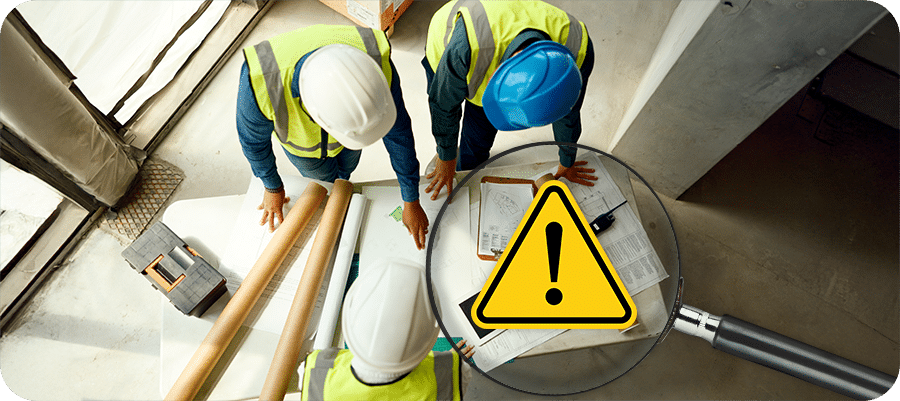
Home Blog Safety Myths And Which Ones Need to Die! Does your workplace suffer from ‘fakelore’? By RDadiz Facebook LinkedIn Some workplace safety “truths” have been passed down for years, but that doesn’t make them right. In fact, some of the most common safety beliefs are flat-out dangerous. It’s time to call them out before they get someone hurt. Here are some of the biggest myths that need to be put to bed: 1. “We’ve Always Done It This Way, and It’s Been Fine” Why it’s dangerous: Just because it worked before doesn’t mean it’s safe now. The fix: Regularly review procedures and update them based on new technology and best practices. Just because something hasn’t caused an accident yet doesn’t mean it won’t. Luck is not a safety strategy. Every shortcut taken without consequence is just stacking the odds against you. The right way to do something is the safe way, not just the way it’s always been done. This myth is especially dangerous because it resists change. New technology, updated regulations, and evolving best practices exist for a reason. Sticking to outdated methods means ignoring safer, more efficient ways to work. It’s only a matter of time before that “tried and true” approach fails in a catastrophic way. “People with [differing] attitudes or inexperience think they can cut corners, but it will catch up with them eventually. It’s just like running stop signs, you might get away with it for a while, but sooner or later, disaster strikes.” Robin Postnikoff 2. “More PPE Means More Safety” Why it’s dangerous: Too much PPE can reduce mobility and create new hazards. The fix: Use the hierarchy of controls, eliminate hazards first, then rely on PPE as a last line of defense. PPE is essential, but it’s not a magic shield. Wearing thick gloves while handling tiny components can reduce grip and increase risk. Heavy gear in hot conditions can lead to heat exhaustion. Safety starts with eliminating hazards, not just piling on more protective equipment. The key is the hierarchy of controls. Remove the hazard first. Substitute safer alternatives. Install engineering or administrative controls before relying solely on PPE. Workers need the right protection, not just more protection. “Sometimes, extreme PPE requirements actually cause more problems. We had sites where tying off at two steps was mandatory, but workers were tripping over their harness cords. It wasn’t reasonable, and people got hurt because of it.” Brett Burkard 3. “A Quick Task Doesn’t Need Full Safety Precautions” Why it’s dangerous: Accidents happen in seconds, especially when rushing. The fix: Treat every task, no matter how small, as an opportunity to follow proper safety procedures. The worst accidents happen when people skip safety steps “just for a second.” It only takes a moment for a fall, a fire, or an amputation to happen. No job is too small for safety. Related read: Do you own a business in the insurance industry? Check out how Artificial Intelligence is transforming the insurance industry. “Every rule has been written in blood. People don’t take things seriously until someone gets hurt or a company gets sued. That’s why we drill safety into training, it has to stick before something bad happens.” Robin Postnikoff 4. “If It’s Not an Injury, It’s Not a Big Deal” Why it’s dangerous: Near misses are warnings that something is wrong. The fix: Investigate and correct all near misses before they turn into serious accidents. Near misses are flashing warning signs. Ignoring them guarantees that next time, someone will get hurt. Treat close calls like actual incidents, investigate, correct, and learn from them. In industries like construction and manufacturing, near misses are often precursors to severe accidents. A worker who trips but doesn’t fall today might break a leg tomorrow. A machine that jams without consequence today might lead to an amputation next week. Reporting and addressing near misses prevent tragedies. 5. “Good Workers Don’t Need Safety Training” Why it’s dangerous: Experience can lead to overconfidence and complacency. The fix: Make regular safety training mandatory for all employees, no matter their experience level. Experience doesn’t make anyone invincible. In fact, veteran workers are often the ones who get complacent. Training isn’t just for rookies, it’s for everyone, all the time. “I don’t care if you have a master’s degree in safety. If you don’t have the experience, the network, and the mindset to keep learning, you’re not going to be a good safety person. Training is never just a ‘one and done.” Kevin Swinden 6. “Slower Work Is Safer Work” Why it’s dangerous: Moving too slowly can cause inefficiencies and increase risk. The fix: Focus on smart work, trained, controlled, and precise, rather than just slow work. Rushing is dangerous, but moving at a crawl isn’t the answer either. Safety is about working smart, not just slow. Proper training and good procedures allow workers to be both safe and efficient. Think about high-risk jobs like firefighting or emergency response. Speed is necessary, but it’s trained, controlled, and precise. The same applies to workplaces. Efficiency and safety go hand in hand when workers follow procedures correctly. 7. “Only High-Risk Jobs Require Safety” Why it’s dangerous: Every workplace has risks, even offices. The fix: Promote workplace-wide safety initiatives. That includes ergonomics, mental health, and general hazard awareness. Office workers don’t wear hard hats, but that doesn’t mean they’re risk-free. Ergonomics, air quality, mental health, and electrical hazards all pose serious threats in lower-risk jobs. Safety applies everywhere. “Workplace safety is expanding beyond just physical hazards. We’re seeing a shift in how mental well-being is incorporated into safety culture, and that’s a game-changer.” Lisa Rantucci 8. “Accidents Just Happen” Why it’s dangerous: Almost all workplace accidents are preventable. The fix: Build a proactive safety culture where workers feel responsible for identifying and addressing hazards. No, they don’t. Almost every workplace accident is preventable. Ignoring risks, skipping procedures, and relying on luck is a choice, and it’s a bad one. “I’ve seen companies turn their
Would You Bet Your Paycheck on Safety?
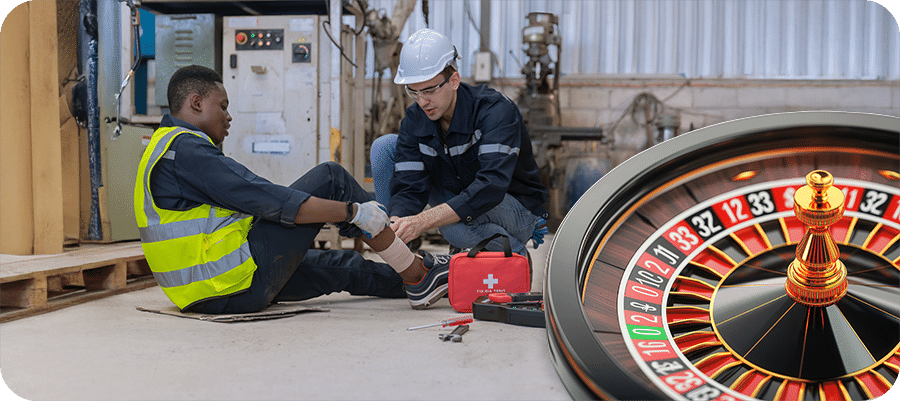
Home Blog Would You Bet Your Paycheck on Safety? That Need to Die By RDadiz Facebook LinkedIn Imagine this: At the end of every shift, you had to bet your entire paycheck that nobody on your crew got hurt. Would you do anything differently? Would you double-check your PPE? Would you remind a co-worker to use a harness? Would you take that extra second to secure a load or test a machine lockout? The truth is, whether you realize it or not, you are betting on safety every day. The stakes aren’t just money, they’re your health, your reputation, and your future. One bad decision, one shortcut, one ignored hazard, and you could lose everything. Safety is More Than a Rule, It’s a Wager Most people wouldn’t gamble their paycheck on pure luck. But every time someone skips a step, assumes a risk, or rushes a job, they’re rolling the dice. Sometimes they win, nothing happens. Other times? That bet costs them weeks of lost wages, medical bills, or a permanent injury. Think about it: A mechanic skips wearing gloves because “it’s just a quick fix.” That quick fix leads to stitches and time off work. A forklift operator speeds up to finish early. One wrong turn leads to a collision, and unemployment. A roofer skips fall protection “just for a second.” That second changes their life forever. Key Takeaways Lorem Ipsum is simply dummy text of the printing and typesetting industry. Lorem Ipsum has been the industry’s standard dummy text ever since the 1500s, when an unknown printer took a galley of type and scrambled it to make a type specimen book. It has survived not only five centuries, but also Lorem Ipsum is simply dummy text of the printing and typesetting industry. Lorem Ipsum has been the industry’s standard dummy text ever since the 1500s, when an unknown printer took a galley of type and scrambled it to make a type specimen book. It has survived not only five centuries, but also Lorem Ipsum is simply dummy text of the printing and typesetting industry. Lorem Ipsum has been the industry’s standard dummy text ever since the 1500s, when an unknown printer took a galley of type and scrambled it to make a type specimen book. It has survived not only five centuries, but also Lorem Ipsum is simply dummy text of the printing and typesetting industry. Lorem Ipsum has been the industry’s standard dummy text ever since the 1500s, when an unknown printer took a galley of type and scrambled it to make a type specimen book. It has survived not only five centuries, but also The House Always Wins Casinos are designed so that, over time, the house always wins. Unsafe work habits work the same way. Maybe you’ve skipped safety steps before and nothing happened. Maybe you’ve seen others take risks and walk away fine. That’s like winning a few hands in a row, it feels good, but the odds will catch up eventually. Complacency is the biggest con of all. The more times a worker gets away with a risk, the more confident they become in their luck. But luck runs out. And when it does, the price is steep. Related read: Do you own a business in the insurance industry? Check out how Artificial Intelligence is transforming the insurance industry. How to Play It Safe (and Win Every Time) 1. Be Smart Act like your paycheck depends on it. Because in many ways, it does. 2. Think Long-Term A shortcut might save five minutes, but an injury could cost five months. 3. Hold Each Other Accountable Safety isn’t a solo game. Watch out for your crew. Remind them that a mistake could cost them more than just pride. 4. Stay Sharp Keep safety top of mind. Refresh your training. Don’t let routine make you careless. 5. Call Out the Risks If something feels unsafe, stop. Speak up. Fix it before it becomes an accident. Make the Right Bet If you had to bet your paycheck on safety, you’d work smarter. You’d pay attention. You’d make sure nobody around you was cutting corners. You’d take safety seriously, because you’d have too much to lose. The reality? You already do. Every shift, every task, every decision is a bet. Make sure it’s one you can afford to win. Stay sharp. Stay safe. Because in this game, there’s no cashing out. Follow us! Stay up-to-date with the latest spotlight articles, podcasts, the SafetyNET Magazine, or our book on Leadership for Safety Excellence. All updates will be shared on our social channels, click below to follow us. Facebook Linkedin Related Articles All Posts #EmergencyPreparedness 2025 safety trends 360 Immersive 360immersive 6S Safety accident prevention accidental careers adjustable workstations adult education AI automation AI implementation AI in business AI in operations AI in Safety AI podcast AI strategy AI transformation Alberta safety courses Allan James Moore artificial intelligence asking for help audit findings audit readiness Audit Reporting automation in safety automation strategy avoidable injuries awareness Aztec Safety back strain BambooHR integration behavior-based safety Behavioral Safety behavioural safety biometric sensors BIS Podcast BIS Safety Podcasts BIS Safety Software BIS Safety Spotlight black holes Blame Culture BP Texas City Explosion Brave Leadership Brett Burkard burnout business automation Canadian OHS Canadian safety Canadian safety history Canadian safety standards carbon monoxide Carolynne Heron CCOHS chemical chemical vapors chronic injuries chronic pain cloud-based safety tools Coming Soon community safety programs Competency in Safety complacency in safety Compliance compliance courses Compliance In Canada compliance issues Compliance management Compliance Reporting compliance software compliance tools compliance tracking compliance training compliance vs protection Construction advocacy Construction education Construction industry construction safety construction safety training continuous improvement continuous safety improvement corporate culture corporate training corrective actions crane CSA standards Customer Spotlight Customer Spotlight Kevin Swinden Global Hazmat Safety Culture Hazmat Management Dangerous Goods Competency in Safety Workplace Risk Mitigation BIS Training Clients Canadian EHS customized training daily trip inspection Damage Prevention Dangerous Goods dangerous goods classification Danny Sellers



